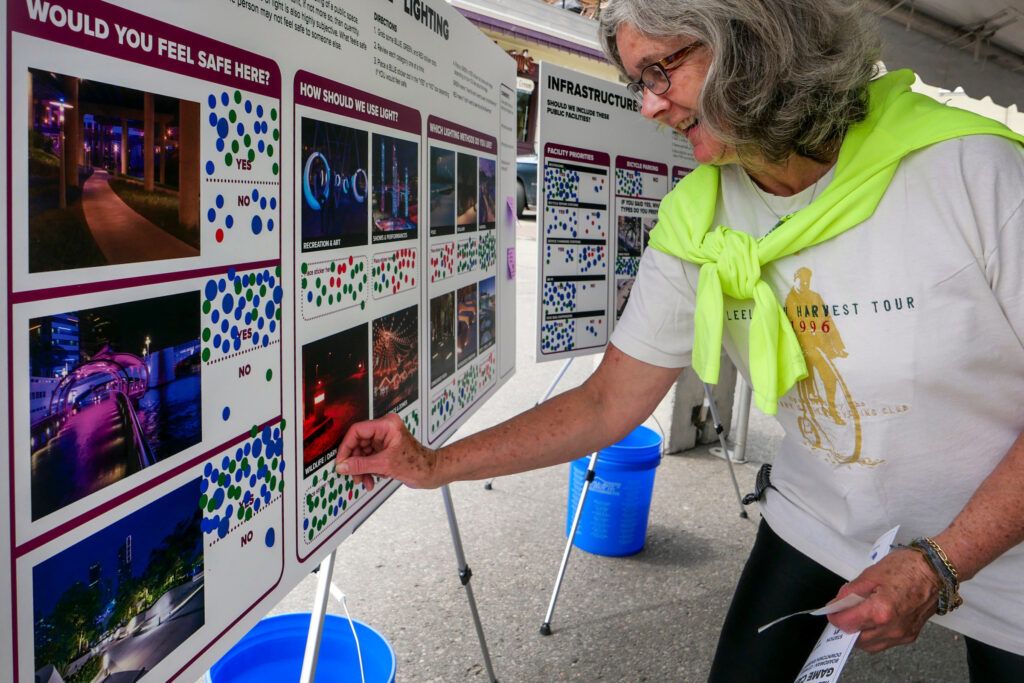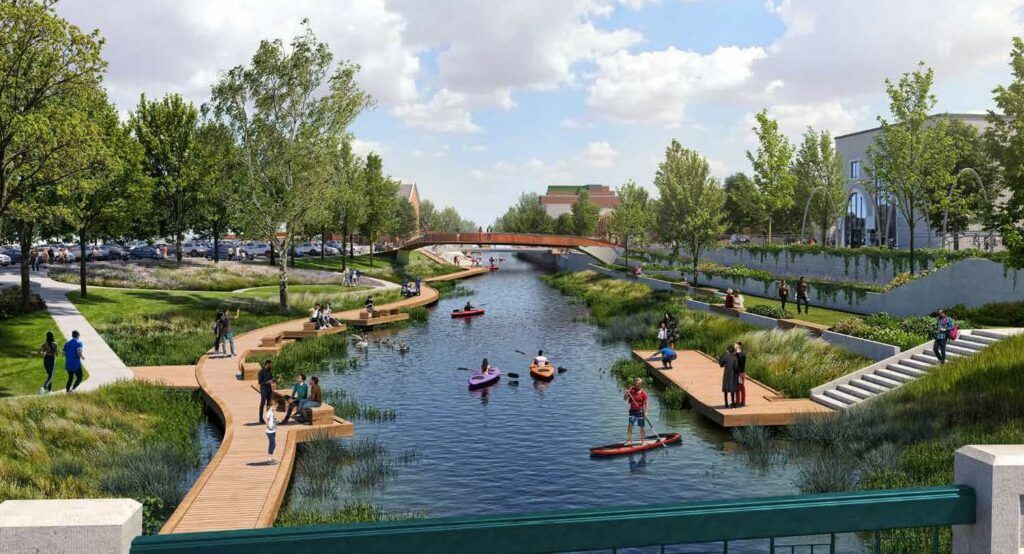
Boardman/Ottaway Downtown Riverfront


This proposed project aims to:
- Honor the River as a Place – Downtown is more than buildings, and more than Front Street. This project provides a way for the community to “turn and celebrate” the river as a public park space, rather than being dominated as parking lots. This is a keystone effort being undertaken alongside others to address needs along 1.6 miles of river in downtown, as outlined in the City-approved Unified Plan for the Lower Boardman/Ottaway River.
- Protect Water Quality – The way we treat the River matters. For years, the River has been neglected. With this project, we have an opportunity to show our appreciation for the River by demonstrating our care through restoration and environmental stewardship. The Request for Proposals for design and engineering calls for protecting water quality through stormwater management practices and vegetation buffers, by saving and planting trees, and by using pervious pavement.
- Enhance Public Access and Connectivity – Most people can’t afford to live on the water. The public Riverwalk will be a place where everyone is welcome. The space will feature outdoor gathering areas that highlight the river’s history and local culture, offer year-round programming and public use activities, and have water access and outdoor recreation opportunities. It will create a green urban space in an area currently dominated by parking lots. This will be a place where we can celebrate our outdoor identity as a community in our downtown. The Riverwalk will also connect to Front Street and the rest of downtown through the existing network of city streets and sidewalks and will connect with existing riverfront boardwalks.
- Support Local Independent Businesses – Public space and how we use it matters. A riverwalk will support efforts to create a great place for people of all ages downtown. This will help attract or keep more people, and more small, local merchants, downtown.
Project Background and Context
The City Commission, DDA Board, City Planning Commission, and City Parks and Recreation Commission have adopted the Lower Boardman River Unified Plan for the entire Lower Boardman River that runs through Traverse City’s urbanized area. This Unified Plan was developed over a three-year planning process that included extensive stakeholder and public engagement. Addressing needs along a stretch of the Boardman/Ottaway River between Union and Park Streets in downtown Traverse City was one of the top priorities listed in the Unified Plan.
In November 2022, following an 11-month public planning and design process for this City-owned property between Union and Park Streets along the river, the DDA Board approved a new conceptual design for this space. The conceptual design, developed by consultant Inform Studio, represents an intention to “turn and embrace” the river (SCROLL DOWN TO VIEW THE DESIGN). The conceptual plan and design addresses components related to site development, maintenance, year-round programming and placemaking including ecology, mobility, water access and recreation, the river’s history and local culture, and public infrastructure including lighting, furniture, public restrooms, and waste management, as well as the relationship with the existing buildings and uses.
The proposed Riverwalk project site is currently used as a parking area. There are erosion issues on the north side of the river. The storm water management system on the south side of the river at this location has been identified as in need of updates and upgrades by the City.
The desired impacts of the proposed Riverwalk project are consistent with the Unified Plan for the River, the 2022-2023 Goals and Objectives of the City Commission, and the Guiding Principles and public infrastructure priorities listed in the DDA’s Moving Downtown Forward Plan. The redesigned space will relatively dramatically change the uses of this downtown public riverfront area by turning it from primarily a paved space for vehicle storage into a place for people. The design of the space will also address stormwater management and water quality protection needs through investments in green and grey infrastructure. Given the location and potential scope, the Riverwalk has the potential to be a truly transformational project for the river and the community.
From Conceptual Design to Action
The conceptual design completed by Inform Studio developed preliminary construction cost estimates for the entire proposed Riverwalk project as well as nine (9) distinct “itemized segments” of the project that could be completed in different phases. At their March 3rd study session, the DDA Board discussed these preliminary cost estimates, as well as potential sequencing and phases of implementation, priorities, and funding needs and sources and made a motion to recommend moving forward in collaboration with the City on a design and engineering.
Next Steps
- May 2023 – City releases Requests for Proposal for design and engineering (the RFP can be viewed here)
- July 2023 – City Commission will consider approving contracts with design and engineering firm
- December 2023 – Design and engineering, cost estimates, and impact assessments are expected to be completed
- 2024 – Construction may begin, pending project and financing approval by the City Commission
The Conceptual Design Plan
Click the following links to review the conceptual design plan, which was created after extensive public input and approved by the DDA board in late 2022.
Part 2: Conceptual Design (large file, please be patient while it loads!)
Public Engagement
A riverwalk/plaza along the river in the heart of downtown was identified as a top priority in the Lower Boardman River Unified Plan, a multi-year process in which the community worked diligently to develop a plan for the 1.6 miles of the river that wind through downtown (see more in FAQ below). That process included two large community workshops, more than 20 pop-up meetings at various public venues throughout the city, eight focus group/stakeholder meetings and two online surveys, marking an incredibly comprehensive public engagement effort.
Once the conceptual design process for a riverwalk was launched, it was supported by further public engagement including several additional stakeholder group meetings, a well-attended open house along the river, a detailed survey and feedback gathered on the design.